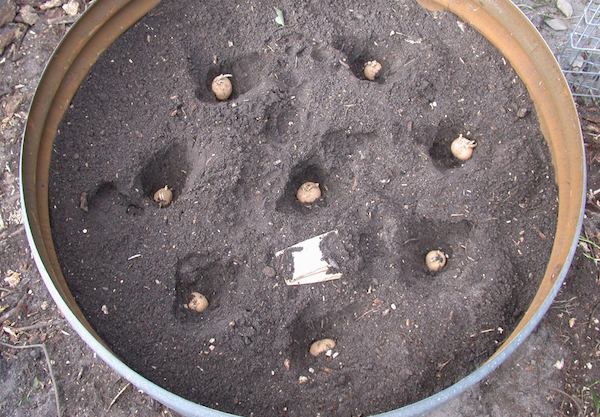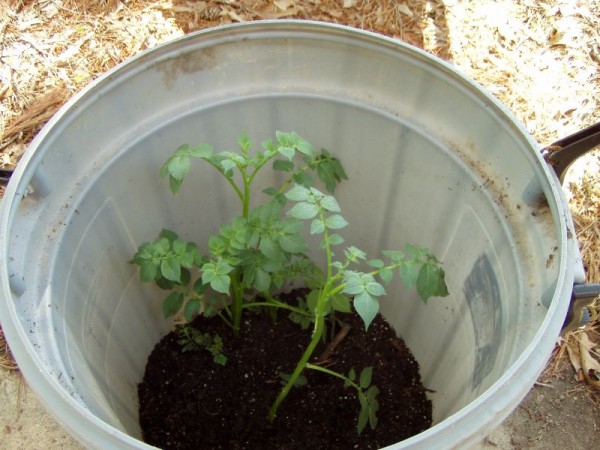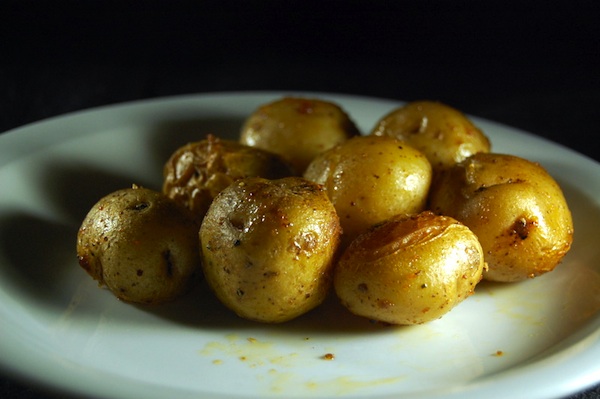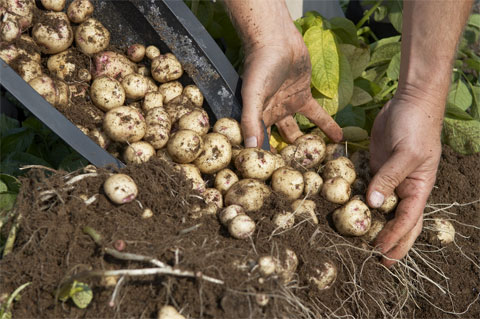Agriculture




- 10 Tips For Companion Planting For Natural Pest Control And Organic Sustainability
Companion planting for pest control and to encourage plants to grow with more vigor has fascinated men for centuries; however, few backyard gardeners know how to use these natural methods for organic sustainability and how to improve your garden. Plants...
- Can You Grow A Black Pepper Plant From A Black Pepper Seed From The Grocery Store?
Peppercorns are the dried fruits of the Piper Nigrum plant. This plant is a vertical vine native to India, but you can grow the plant temperate climates around the world. The soil must maintain a temperature of between 75 and 80 degrees F until the seeds...
- Planting Tomatoes
To get a bumper crop, stagger planting dates to extend the tomato harvest. Staggered transplant times will also reduce pest and disease problems, though it may not be an option if you live in an area with a short growing season. For people with longer,...
- How To Grow Ginger At Home
When I started growing ginger root I expected it to be difficult. It's not. I've been growing ginger at home for years, and ginger would have to be a serious contender for the title "most neglected plant" in my garden. (Which is a shame. Ginger...
- Herbs For The Winter Windowsill
Now that the growing season is over, do you still find yourself ready to dash out to the garden for some chives, basil or a sprig of thyme, only to lament their loss to the cold weather? Why not start a small collection of culinary herbs indoors, where...
Agriculture
4 Simple Steps to Grow a Hundred Pounds of Potatoes in a Barrel
by Timothy Hurst
Container gardening isn't only for savvy urban gardeners and folks with limited space to grow, it can also be for folks who want to maximize their yields in a controlled environment. Not only does growing potatoes in a barrel reduce the amount of weeding and exposure to pests and fungi, you don't even have to risk shovel-damage to the tender potatoes by digging them out of the ground when they're done, just tip the container over!

After extensive research to plan my own potatoes-in-a-barrel, I've boiled all of the recommendations down to 4 simple steps to a winning potato harvest.
1. Select and prepare a container
You'll need to pick out a container such as a 50-gallon trash barrel or one of those half whiskey barrel planters. Alternatively, you can buy used food-grade barrels or commercially-available potato planters. Just about any 2 to 3-foot tall container will work, but be sure to select a container that either already has holes in it, or is okay to cut holes in. Next you'll want to clean your container with a mild bleach solution to get out any of the nasties that have been lingering in there. If you don't want to use bleach, you can make a bleach alternative to use instead.
Good drainage is critical for the cultivation of healthy potatoes so you'll want to cut or drill a series of large drainage holes in the bottom and bottom sides of your container. Alternatively, you can cut out the bottom altogether and place it on a well-drained surface like your garden bed.

2. Choose a variety and plant potatoes
Seed potatoes can usually be found at nurseries early in the growing season, but you should only have to buy them once. If you can, ?chit? or sprout your potatoes before planting them by setting them out in an egg carton, the side with the most buds facing up, and putting them in a cool light room out of direct sunlight to sprout. Putting the tubers in an open paper bag can have this same effect.
Fill in the bottom of your container with about 6 inches of loose planting mix and compost. You'll want to use a planting mix with a peat moss-like soil amendment like this product made from repurposed coconut husks, doing so will keep the soil from becoming too compacted and help it to store moisture for the roots. Next, add some seed potatoes on the layer of soil, making certain to leave plenty of space between each cube. You can use the whole potato but I like to cut the potatoes into 1 to 2-inch cubes for planting. Loosely backfill the potatoes with another 6 inches of your soil and compost mix and water to dampen soil. Keep the soil damp at all times but be careful not to overwater.

3. Add more soil
When they have about 6 to 8 inches of foliage, add another layer of your soil-compost mix covering about one-half to three-quarters of the visible stems and foliage. Repeat this process of allowing the sprouts to grow and then covering the sprouts and moistening the soil as the plants grow up toward the top of the barrel.
4. Harvest the potatoes
After about 10 weeks or until the plants flower and start to yellow, the potatoes should be ready to harvest. Carefully dig down with your hands to inspect the top-most layer. After you've confirmed your suspicions, dump the barrel out on a tarp and inspect your bounty.

Other tips to grow bushels of barrel potatoes
- After the first harvest, keep a few potatoes to use as seed potatoes next year.
- Bush beans are a great companion plant for potatoes.
- Instead of using soil, try growing potatoes in sawdust.
- Experiment with different containers, seed potatoes and watering regimes.
- If the above steps aren't sufficient, do some more research.
Have any photos or useful tips for growing potatoes in a barrel? Please share!
Source:

- 10 Tips For Companion Planting For Natural Pest Control And Organic Sustainability
Companion planting for pest control and to encourage plants to grow with more vigor has fascinated men for centuries; however, few backyard gardeners know how to use these natural methods for organic sustainability and how to improve your garden. Plants...
- Can You Grow A Black Pepper Plant From A Black Pepper Seed From The Grocery Store?
Peppercorns are the dried fruits of the Piper Nigrum plant. This plant is a vertical vine native to India, but you can grow the plant temperate climates around the world. The soil must maintain a temperature of between 75 and 80 degrees F until the seeds...
- Planting Tomatoes
To get a bumper crop, stagger planting dates to extend the tomato harvest. Staggered transplant times will also reduce pest and disease problems, though it may not be an option if you live in an area with a short growing season. For people with longer,...
- How To Grow Ginger At Home
When I started growing ginger root I expected it to be difficult. It's not. I've been growing ginger at home for years, and ginger would have to be a serious contender for the title "most neglected plant" in my garden. (Which is a shame. Ginger...
- Herbs For The Winter Windowsill
Now that the growing season is over, do you still find yourself ready to dash out to the garden for some chives, basil or a sprig of thyme, only to lament their loss to the cold weather? Why not start a small collection of culinary herbs indoors, where...

